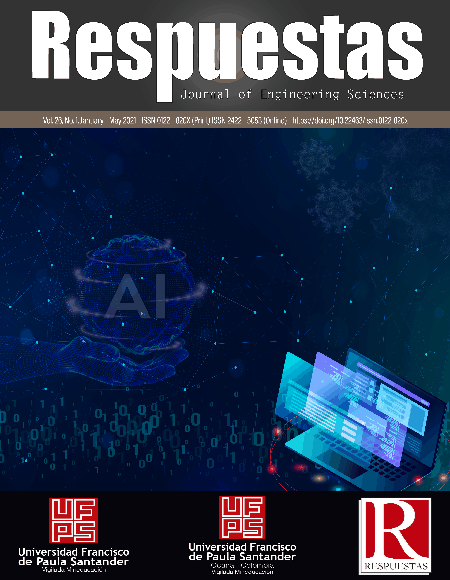Influence of the interface modelling in numerical simulation of tied-back excavations
Influencia de la modelación de la interfase en la simulación numérica de excavaciones con muros diafragma anclados
Main Article Content
In terms of numerical modeling, one of the aspects that mainly affects the earth pressure values of tie-back excavations is the friction or adhesion that is generated at the interface between the soil and the retention structure material (generally concrete). Typically, software providers based on the finite element method establish that the roughness value does not have a major influence on the results. However, when comparing the output data, in numerical simulations, this is not necessarily entirely true. Generally, this factor is simulated in the programs relating the interface strength with the soil strength. The current contribution aims to validate the influence of the variation of different parameters related to roughness or friction on the results of earth pressure in an anchored diaphragm wall. The results show high variations, with a high dependence on the mentioned parameters that are related to the modeling of the interface.
Downloads
Article Details
Bentley. Scientific Manual, Plaxis, Connect Edition V21.01, 2021.
J.F. Camacho-Tauta, O.J. Reyes-Ortiz and P.B. Bueno Pumarejo, “Utilización del modelo Cam-Clay modificado en suelos cohesivos de la sabana de Bogotá”, Ciencia e Ingeniería Neogranadina. Universidad Militar Nueva Granada, vol. 14, pp. 1–13, 2004
C. Mendoza, M. Farias and R.P da Cunha, “Validación de modelos constitutivos avanzados de comportamiento mecánico para la arcilla estructurada de Brasilia”, Obras y proyectos. Universidad Católica de la Santísima Concepción, vol. 15, pp. 52–70, 2014
A. Nieto Leal, J.F. Camacho-Tauta and E.F Ruiz Blanco, “Determinación de parámetros para los modelos elastoplásticos Mohr-Coulomb y Hardening Soil en suelos arcillosos”, Revista Ingenierías Universidad de Medellín, vol. 8, no 6, pp. 75–91, 2009
J.C. Ruge, “Analysis of the behaviour of pile curtain executed on porous metaestable soil through the use of a hypoplastic constitutive model considering the unsaturated response” Ph.D. dissertation, University of Brasilia, Brasilia, DF, Brazil, 2014
J.C. Ruge, A. López, F.A. Molina-Gómez, R.P da Cunha and J.E. Colmenares, “Numerical Simulations of Ko Triaxial Tests on Collapsible Porous Clay”, Geotechnical Engineering Journal of the SEAGS & AGSSEA, vol. 49, no 6, pp. 73-81, 2018
M.C. Olarte and J.C. Ruge “Analysis of numerical simulations on triaxial compression tests using different constitutive models of the soil behaviour”, Journal of Physics: Conf. Ser. vol 1388, no 012015, pp. 1-13, 2019.
D.M. Potts and A.B. Fourie, "Behaviour of a propped retaining wall: Results of a numerical experiment", Geotechnique, vol 34, no 3, pp. 383-404, 1984
Y. Dong, “Advanced Finite Element Analysis of Deep Excavation Case Histories”, Ph.D. dissertation, University of Oxford, UK, 2014
J.G. Potyondy, “Skin Friction between Various Soils and Construction Materials." Geotechnique, vol. 11, pp. 339-353, 1961
M. Boulon, “Basic features of soil structure interface behaviour”, Computers and Geotechnics, vol 7, no 1–2, pp. 115-131, 1989
M. Boulon and R. Nova, “Modelling of soil-structure interface behaviour a comparison between elastoplastic and rate type laws”, Computers and Geotechnics, vol 9, no 1–2, pp. 21-46, 1990
W. Powrie and E.S. Li, “Finite element analyses of an in-situ wall propped at formation level”, Geotechnique, vol 41, pp. 499-514, 1991
R.A Day and D. M. Potts, “Zero thickness interface elements - numerical stability and application”, International Journal for Numerical & Analytical Methods in Geomechanics, vol. 18, no 10, pp. 689-708, 1994
R.A. Day and D.M. Potts, “The effect of interface properties on retaining wall behaviour." International Journal for Numerical and Analytical Methods in Geomechanics vol. 22, no 12, pp. 1021-1033, 1998




 Perfil Google Scholar
Perfil Google Scholar



